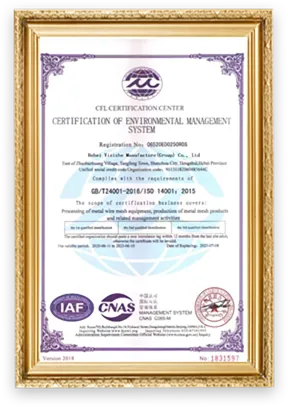Jul . 30, 2024 04:06 Back to list
Combining Chicken Wire and Wooden Fencing for an Ideal Farm Boundary Solution
The Charm and Utility of Chicken Wire and Wood Fences
When it comes to creating functional yet charming enclosures for gardens, yards, or farms, the combination of chicken wire and wooden fences stands out as a popular choice. This duo not only offers practicality and durability but also adds an aesthetic touch to any property. In this article, we explore the benefits, applications, and decorative aspects of using chicken wire and wood fences.
The Benefits of Chicken Wire
Chicken wire, a versatile and economical material, is primarily designed to contain smaller animals like chickens, rabbits, and other livestock. Made of thin, flexible metal wire arranged in a hexagonal pattern, it excels in keeping critters in or out while allowing adequate ventilation and light. The primary advantage of chicken wire lies in its visibility; it provides a good view of the enclosed area, allowing for easy monitoring of pets and livestock.
Furthermore, chicken wire is resistant to rust and corrosion when treated or coated, making it suitable for various outdoor conditions. Its lightweight nature ensures easy installation and handling, and as a bonus, it blends well with natural surroundings, maintaining the serene landscape of gardens or farms.
The Role of Wood Fences
Wooden fences, on the other hand, add a rustic and timeless quality to any property. They can be customized in height, depth, and style, making them perfect for creating boundaries around gardens, yards, or animal enclosures. The sturdiness of wood provides an additional layer of security against larger animals or potential intruders.
A wooden fence can be treated and painted in a variety of finishes, enabling homeowners to tailor it to their specific aesthetic preferences. Whether opting for a classic picket fence or a more solid privacy fence, the warmth and texture of wood enhance the overall look of any area.
chicken wire wood fence

A Perfect Combination
The combination of chicken wire and wooden fences allows for a seamless integration of function and beauty. When chicken wire is attached to a wooden frame, it generates a boundary that effectively protects smaller animals while maintaining an open feel. This setup is particularly beneficial for gardeners looking to keep deer, rabbits, and other garden pests at bay without the imposing presence of a solid fence.
Moreover, this hybrid fencing can be visually appealing. By using treated wood posts and frames, homeowners can create an attractive outline around their properties while the chicken wire subtly complements the design. Decorative elements such as wooden gates or trellises can also be incorporated, enhancing the charm of the enclosure.
Practical Applications
In addition to its aesthetic benefits, the chicken wire and wood fence combination is practical in various scenarios. For urban dwellers with limited outdoor space, it provides an excellent solution for vertical gardening. By attaching chicken wire to a wooden frame, gardeners can create a trellis for climbing plants, helping maximize the use of space while adding greenery.
For those with pets, this fencing solution creates a safe haven for animals to roam freely while keeping them contained. It allows pet owners to establish boundaries without obstructing their view of the surrounding environment. Additionally, for raising chickens or other small livestock, chicken wire remains the best ally, ensuring the animals can enjoy the outdoors safely.
Conclusion
In summary, the integration of chicken wire and wooden fences offers a host of benefits ranging from practicality to aesthetic appeal. This combination not only keeps gardens, pets, and livestock safely contained but also enhances the appearance of the surrounding area. For homeowners seeking to establish functional yet charming enclosures, the chicken wire and wood fence duo is undoubtedly a wise choice, marrying utility with beauty for years to come. Whether it’s for gardening, pets, or simply marking a property line, this timeless partnership resonates with both form and function.
-
The Role of Field Wire Fence in Grassland Conservation
NewsJul.15,2025
-
Stainless Steel Razor Wire Durability in Coastal Environments
NewsJul.15,2025
-
Enhancing Home Security with Mesh Fences
NewsJul.15,2025
-
Diamond Mesh Wire for Small Animal Enclosures
NewsJul.15,2025
-
Common Wire Nail Tensile Strength Testing for Woodworking
NewsJul.15,2025
-
Barbed Wire Corrosion Resistance Galvanization Techniques
NewsJul.15,2025









